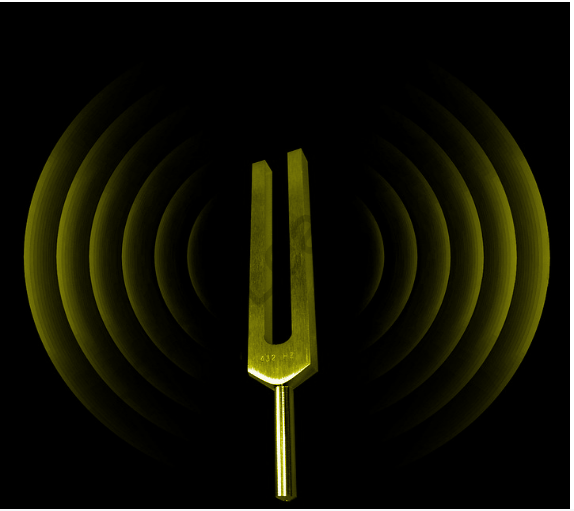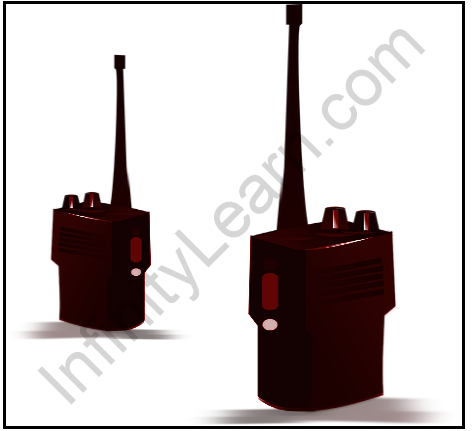Table of Contents
Introduction:
Wave Motion
The process by which a disturbance at one point in space is propagated to a point further away from the source with no net transfer of the medium’s substance is known as wave motion. Sound, for example, is a type of wave motion, although the wind is not. Wave motion can only exist in a medium that can store energy in both kinetic and potential forms. In a mechanical medium, inertia causes kinetic energy, which is stored in the velocity of the molecules, whereas elasticity causes potential energy, which is stored in the displacement of the molecules.
A free traveling wave (as opposed to a stationary or standing wave) occurs when one section of the medium disturbs another, transferring energy to it.
Wave propagation, in more technical terms, occurs when kinetic energy at one place is transformed to potential energy at a neighboring site, and vice versa. The constants of the medium determine the disturbance’s rate of travel or propagation velocity. A stationary wave is made of two waves with the same frequency and strength that travel in opposite directions, with no net energy transfer away from the source.
So now we have a brief idea about wave motion, now let’s explore our today’s topic that is Longitudinal and Transverse Wave
Longitudinal Wave
Longitudinal or compression waves are defined as waves in which the particle motion is parallel to the wave’s propagation direction. The pressure oscillations are sinusoidal in nature and are defined by frequency, amplitude, and wavelength.
The following equation relates the frequency (f) of a wave to the period (T) of a single cycle:
f=1/T
The frequency unit is the Hertz (Hz) (per second). An angular or radial frequency (f) can be used to characterize this frequency:
ω=2πf
Longitudinal wave examples

-
Tuning Fork Vibrations
A tuning fork is a good example of how a vibrating object may produce sound. It has a handle and two metal prongs that are stretchy (generally steel). When you hit the tuning fork with a rubber hammer, the prongs begin to vibrate, causing neighboring air molecules to be disturbed.
The surrounding air contracts as the prong stretches outward from its typical location, creating a high-pressure zone (compression) near to it. As the prong travels inside, it stretches the surrounding air molecules into a huge area of space, resulting in a low-pressure region (rarefaction) adjacent to the prong.
-
Diagnostic Sonography
Internal body parts such as blood vessels, muscles, joints, tendons, and internal organs are imaged using ultrasonic waves. Ultrasound pulses are sent into tissue using a probe to create sonograms (also known as ultrasonic pictures). The pluses are processed and turned into a digital image after resonating off tissues with different reflection characteristics.
Ultrasound, unlike other medical imaging modalities, produces images in real-time. The instruments are lightweight, low-cost, and don’t emit hazardous ionizing radiation. They do, however, have a limited field of view and necessitate the use of a professional operator.
-
Sonic Weapons
High ultrasonic frequencies are used in sonic weapons to incapacitate, wound, or kill opponents. Several forms of sonic weapons are now in the research and development phase, though they are utilized by military and police agencies.
These weapons emit longitudinal sound waves that can cause discomfort or nausea in people. In crowd control attempts, they are frequently employed to disperse protestors and rioters.
High-powered sound waves can obliterate an opponent’s eardrums, inflicting extreme agony and disorientation. High-intensity ultrasound (700 kHz – 3.6 MHz) causes intestinal and lung damage in animals, according to studies.
Transverse wave
A transverse wave is a moving wave with oscillations that are perpendicular (or right-angled) to the energy transfer direction. When a transverse wave moves in the positive x-direction, its oscillations occur on the y–z plane in up and down directions. A transverse wave is something like light. The displacement of the medium in the case of transverse waves in the matter is perpendicular to the wave’s propagation direction. Transverse waves are easily represented as a ripple on a pond or a wave on a string.
When a wave moves through a medium–such as air, water, or the standard reference media (vacuum), it does so at a specific speed. This is known as the propagation speed. The propagation speed of the wave is denoted and may be calculated using the following formula:
v=f λ
Transverse Wave examples

- Radio Wave
A radio wave is a series of recurring peaks and troughs, similar to water ripples. The wavelengths of these waves are the longest in the electromagnetic spectrum, ranging from 1 millimeter to more than 100 kilometers (62 miles).
They’re widely used in broadcast radio and television, cellular telephony, air traffic control, and remote-control gadgets and toys. Radio waves are used in digital radio, both terrestrial and satellite, to improve audio clarity and volume. Radio transmissions are used to trigger many artificial satellite operating systems and rockets.
-
Microwaves
Microwaves, like radio waves, are a form of electromagnetic radiation with many uses, including radar, telecommunication, and cooking. They’re also employed in keyless entry systems, collision avoidance systems, remote sensing, and spectroscopy in current technology.
-
Infrared
We can perceive the energy of these waves as heat, despite the fact that we cannot see infrared. Most items emit infrared heat radiation when they are around room temperature.
Infrared is used to transmit heat in much domestic equipment, such as toasters and heat lamps. Nearly 90% of the electrical energy in an incandescent bulb is transferred to infrared radiation; just 10% is turned to visible light energy.
Infrared energy is used in a variety of point-to-point communication systems. For example, a remote control sends out infrared pulses to the gadget it’s controlling. Specific commands, like volume up/down or power on/off, are encoded in these pulses. These pulses are decoded by the device’s receiver into data that the microprocessor can understand.
Also read: Important Topic of Physics: Instantaneous Velocity
FAQs;
What determines whether a wave is transverse or longitudinal?
The medium moves perpendicular to the wave's direction when it encounters transverse waves. Longitudinal waves force the medium to move in a straight line with the wave's direction.
Is it possible for longitudinal and transverse waves to move through space?
The oscillations of transverse waves are at right angles to the direction of travel and energy transmission. Transverse waves are light and other types of electromagnetic energy. In a vacuum, such as space, all forms of electromagnetic waves travel at the same speed.
Do waves have the ability to transfer energy?
A wave is a disturbance that moves energy instead of the entity from one place to another. Waves carry energy away from the source, or origin, of the energy. The contact of raindrops or a stone on the water's surface provides energy to the water waves.







